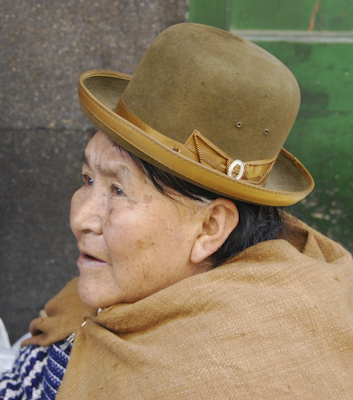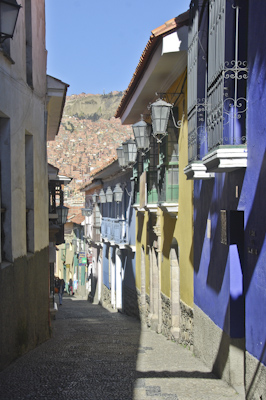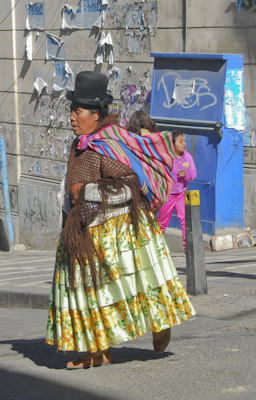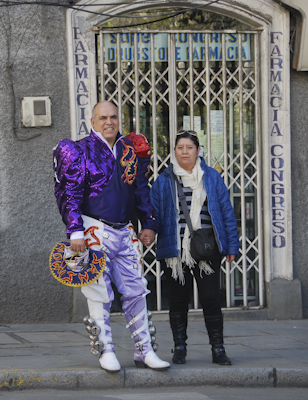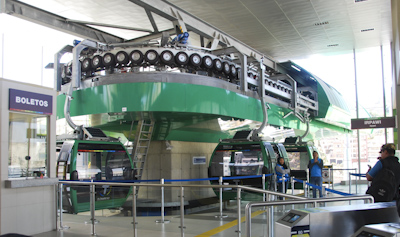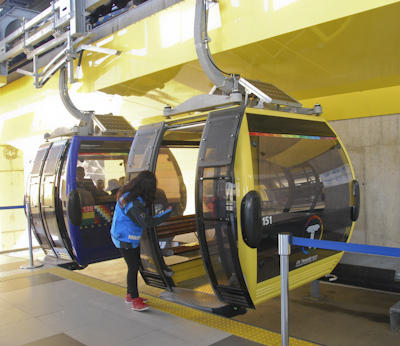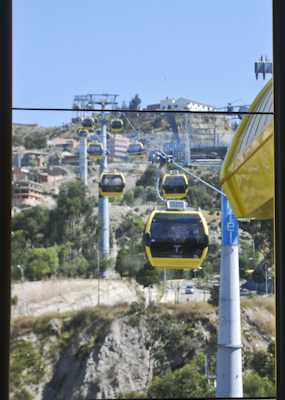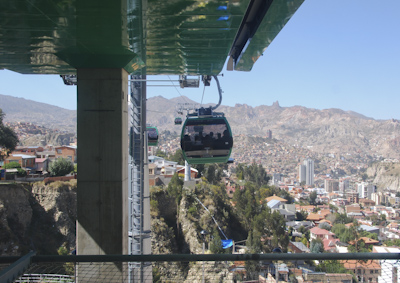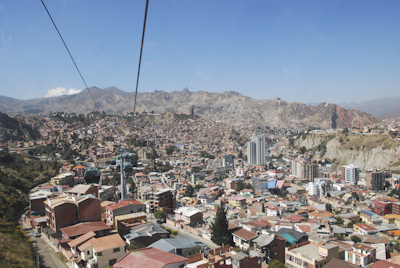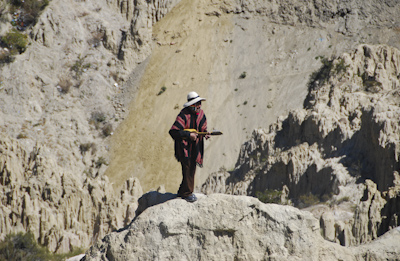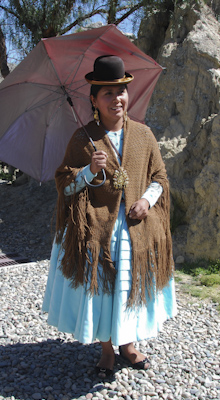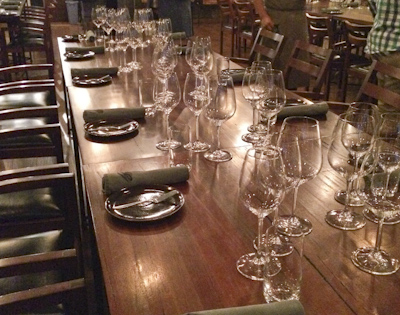Saturday, May 30, 2015
It was difficult to get a full night’s sleep at 12,000 feet. I woke up during the night with headaches and finally, a couple of Advils helped. I’m not sure I could ever fully adjust to the altitude, but I rationalized that it could always be worse. Almost everyone on this tour had shown some symptom of altitude sickness.
Today was our chance to see Nuestra Señora de La Paz, Bolivia, the highest administrative capital in the world with a population of one million people. It was also the last day of our tour. Tomorrow we leave for home.
La Paz is an amazing city, built among rocky mountain peaks and valleys on this part of the Andes Mountain Range. It is steeper and has more ascending and descending streets than San Francisco or any other city I’ve ever seen. Independently owned mini-vans run up and down the roads carrying passengers for hire. Many bridges reach from one area to another connecting the many hills. Cars and traffic are everywhere. The newest mode of transportation is the Austrian-built aerial cable car system which the Bolivians call “Mi Teleferico.” Three lines are currently in operation with two more under construction.
The city seemed more prosperous than Lima due to recently discovered oil and natural gas. Construction sites were everywhere and La Paz is growing so rapidly that the city is a hodge lodge of automobiles and overhead wires. There were very few traffic lights, lots of traffic, and pedestrians have NO rights.
Our first stop was the historic district with its narrow streets and brightly painted houses. We walked down, literally, Calle Kaura Kancha (pictured above) which had been a “mercado de llamas” or market where local people sold and traded llamas, alpacas, and vicunas during the 18th century.
Few Spanish colonial-style buildings still exist here because they are expensive to maintain. With increasing real estate values and the growing need for modern high-rise buildings, the future of the old buildings is bleak.
Our desire to see more of the center of the city was again thwarted due to a major holiday taking place this weekend: La Fiesta del Gran Poder (the Great Power). Many businesses were closed and people were preparing for a huge parade and other festivities.
Our group continued walking to the Plaza Murillo which is an open governmental space surrounded by the Presidential Palace, the National Congress of Bolivia, and the Cathedral of La Paz.
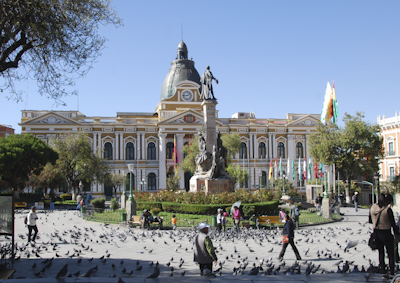 The National Congress of Bolivia
The National Congress of Bolivia
 The pink Presidential Palace and the Cathedral of La Paz
The pink Presidential Palace and the Cathedral of La Paz
 Interior of the Cathedral – Main Altar
Interior of the Cathedral – Main Altar
We saw many people in parade costumes on their way to la Fiesta del Gran Poder. Our local guide informed us this holiday was the major cultural and social event of the year and festivities continue for a week or more.
The bus picked us up at the plaza and we drove to another section of La Paz to ride Mi Teleferico. I think it was a brilliant idea to connect the hills of La Paz with aerial cable cars. Although the system was expensive to build, the ride was cheap, efficient, quick, and carries tens of thousands of people all over the city.
Passengers have to jump on while the suspended car is moving. Each car held eight people.
The views of the city were magnificent:
Our next stop was the geological site of the Valle de la Luna. The mountain in this region was comprised of clay instead of harder rock minerals. Erosion wore away much of the sides of the mountain leaving tall spires. There was a striking variety of colors due to the variety of minerals. It was supposed to look like someone’s idea of a moon-scape and is a tourist attraction.
A beautiful young woman in a lovely costume stood near the entrance. Lara, our local guide asked the woman to explain her dress and her jewelry. By tradition, she wore seven layers under her (pollera) skirt. Indigenous women were forced to adopt the Spanish peasant dress during the colonial period. The bowler hat was acquired by women in the 1920s from a European shipment of hats which were too small for men. Today, women wear the costume with pride to show their indigenous roots and they consider it a status symbol. The gold clasp on her shawl (manta) has been duplicated and is sold in expensive boutiques in La Paz.
We left the Valley of the Moon and returned to the neighborhood of our hotel. We had a free afternoon to have lunch on our own, explore as much as we wanted, or rest. The motor coach dropped us off at the intersection pictured below.
I joined a couple from St. Louis, Missouri and we found an Italian restaurant called Fellini’s. It was late afternoon so we shared a personal-size pizza. We wanted to save our appetites for dinner.
Tonight was our last night in Bolivia and for our farewell dinner, Marcos made reservations at the internationally reknowned Restaurant Gustu. This was the latest venture of the Danish chef, Claus Meyer, who created Noma in Copenhagen, the “Best Restaurant in the World.” Our private dining room was decorated in minimalist style with warm wood trim, low lights, and brightly colored Bolivian cushions.
After delicious hors d’oeuvres, we enjoyed a four course dinner with wine parings. The young sommelier served as our guide through the adventurous meal. The concept was to utilize the rich bounty of Bolivian natural products to create tasty food. All the courses featured fresh farm products from all parts of Bolivia prepared in unique ways. It was an interesting dinner. I wish Gustu well and I hope the restaurant helps Bolivia gain international recognition.
